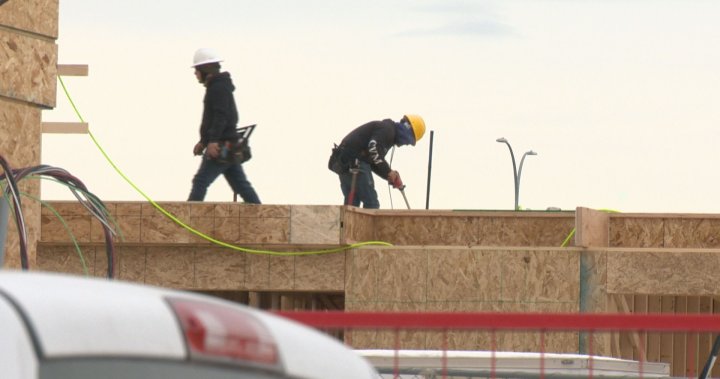General News
Manitoba apprenticeship ratio reduction ‘concerning,’ company says – Winnipeg

Stakeholders are wondering what’s next after the Manitoba government announced it will be knocking down the number of apprentices that can be assigned to a journeyperson with a new apprenticeship ratio.
On Wednesday, the province said the regulation would be brought from 2:1 to 1:1, which was originally instituted after Michael Skanderberg died working on the job in 1999. It was changed to 2:1 in 2021.
Ron Hambley, president of the Winnipeg Construction Association (WCA), said it was changed for good reason.
“Our members literally had ample and robust discussions about appropriate ratios in the industry, and settled on the 2:1,” he said. “Frankly, the industry was OK with that. Two-to-one lets the industry grow at a reasonable, manageable pace, and in general, the industry was pretty pleased with that situation.”
Now, Hambley wonders how an already existing workforce shortage will be filled, especially looking down the barrel of thousands of construction workers soon to retire.
“The industries that we’re attempting to staff up with higher numbers of apprentices are going to be in a dire situation,” he said, adding that layoffs are likely on the books.
“If you have five journeypersons currently, you can have up to 10 apprentices. If the rules change, which we anticipate they will, it’ll get rolled back to five. So five of those apprentices will have to find something else to do,” he said.
Breaking news from Canada and around the world
sent to your email, as it happens.
The WCA reports 65 per cent of its members will be forced to let apprentices go.
One of those companies could very well be PowerTec Electric Inc.
“It’s concerning for us,” said Daniel Hartley, president of the business.
“As an employer, we’re certainly going to feel the impacts of that through layoffs of apprentices, or not being able to hire the apprentices that we need,” he said.
Right now, Hartley said the company employs about 30 apprentices, which is just over a 1:1 ratio.
“But we’re in the process of hiring right now. We would hire more apprentices than we would journeymen to try and fill the gaps and the needs that we have for the work we get,” he said.
Jamie Moses, the minister of economic development, investment, trade and natural resources, said “We’re still going to continue to grow our skilled trades.”
“We know that’s an important area to grow in our workforce, and we’re going to do that by investing in training seats,” he said.
Moses did not comment on how many training seats would be opening, saying that information would be available in the upcoming budget.
He said the hope of the ratio reduction is to “encourage people to go into the skilled trades by ensuring that it’s going to be high-quality and ensure that it’s very safe.”
However, Hartley said the reduction feels like backtracking.
“Over the past few years, we’ve had a number of programs in place that have allowed us to hire apprentices — especially new and first-level apprentices — to get them into the trade,” he said.
“So we’ve taken advantage of a lot of these subsidies and incentives to get people into the trades. Now, we feel like the rug has sort of been pulled out from under us, and they’re saying now you’ve got to take away some of these opportunities from these people.”
Hartley echoed Hambley’s concern about an aging workforce.
“If we can only hire one apprentice for every journeyman, as those people retire, we’re hardly replacing them. That doesn’t leave a lot of room for growth in the economy,” he said.
Not only this, but he said with a ratio reduction, there will likely be an impact on homeowners’ pockets.
“We’re able to provide good training with a 2:1 ratio while keeping costs down for the builder who’s just experienced unprecedented interest rate hikes and material inflation. Now the labour is going to go up again.”

© 2024 Global News, a division of Corus Entertainment Inc.
Source
Disclaimer: No copyright infringement intended. All rights and credits reserved to respective owner(s).

























